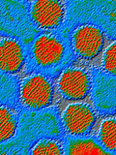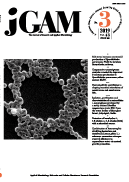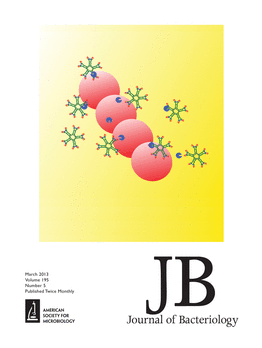
PLASMID
Scope & Guideline
Charting the course of plasmid science.
Introduction
Aims and Scopes
- Plasmid Biology and Functionality:
Research articles often explore the basic biology of plasmids, including their replication, stability, and segregation mechanisms. This includes detailed studies on plasmid structures and functional elements. - Antibiotic Resistance Mechanisms:
A significant focus is on understanding how plasmids contribute to the spread of antibiotic resistance genes among bacterial populations, particularly in clinical and environmental contexts. - Horizontal Gene Transfer:
The journal emphasizes studies on plasmid-mediated horizontal gene transfer, which is crucial for the dissemination of traits such as virulence and antibiotic resistance across different bacterial species. - Applications in Biotechnology:
Research often includes the development and application of plasmids in genetic engineering and synthetic biology, exploring their use in recombinant protein production and gene therapy. - Microbial Interactions:
PLASMID also covers how plasmids influence microbial interactions within communities, particularly in plant and human microbiomes.
Trending and Emerging
- Thermal Stability and Novel Manipulation Techniques:
Recent studies have begun to explore the development of thermostable plasmids and novel gene manipulation techniques, indicating an increasing interest in plasmids that can withstand extreme conditions for biotechnological applications. - Intercellular Plasmid Transfer:
Research on intercellular transfer of plasmid DNA, particularly in human cell lines, is on the rise, emphasizing the relevance of plasmids in gene therapy and synthetic biology applications. - Environmental Plasmids and Antibiotic Resistance:
There is growing attention on plasmids found in environmental contexts, particularly those associated with antibiotic resistance in polluted environments, highlighting the need for surveillance in natural ecosystems. - Plasmid Dynamics and Microfluidics:
Innovative methodologies, such as single-cell microfluidics, are increasingly being utilized to study plasmid dynamics, showing a trend toward more sophisticated experimental designs that can provide real-time insights into plasmid behavior. - Plasmidome Studies in Complex Microbial Communities:
The exploration of plasmidomes—comprehensive studies of plasmid content within microbial communities—is gaining momentum, reflecting a shift towards understanding plasmid interactions within diverse ecosystems.
Declining or Waning
- Traditional Plasmid Classification:
There has been a noticeable decline in papers focused on traditional classification systems for plasmids. This may be due to the emergence of more sophisticated genomic approaches that provide a deeper understanding of plasmid diversity. - Basic Laboratory Techniques for Plasmid Handling:
As the field evolves with advanced methodologies, papers detailing basic laboratory techniques for plasmid manipulation have become less frequent, indicating a shift towards more complex experimental designs. - Single-Organism Studies:
Research focused solely on plasmids from a single organism has decreased, possibly due to an increasing emphasis on comparative studies and the ecological roles of plasmids in broader microbial communities.
Similar Journals

PERIODICUM BIOLOGORUM
Exploring Innovations in Agriculture and MedicinePERIODICUM BIOLOGORUM is a well-established interdisciplinary journal published in Croatia that focuses on advancing the fields of agricultural and biological sciences, biochemistry, genetics, and molecular biology, along with general medicine. With its roots dating back to 1980, the journal has been an essential platform for the dissemination of original research, reviews, and theoretical studies, fostering collaboration and dialogue among researchers within these diverse areas. While currently holding a Q4 quartile ranking in several categories, including agricultural and biological sciences, biochemistry, and general medicine, it provides a significant opportunity for authors seeking to contribute to the body of knowledge in these sectors. Although Open Access options are not available, the journal's rich history and commitment to quality scholarship make it a valuable resource for professionals, researchers, and students alike, aiming to stay informed about current trends and advancements in biological research and its applications.

Annual Review of Microbiology
Pioneering Reviews for the Future of MicrobiologyAnnual Review of Microbiology is a preeminent academic journal published by Annual Reviews, specializing in the dynamic field of microbiology. With a rich history dating back to 1948, this journal has become a vital resource for researchers, professionals, and students alike, providing comprehensive reviews that synthesize the latest advancements and trends in microbiological research. The journal is renowned for its impressive reputation, holding a Q1 ranking in both Medicine (miscellaneous) and Microbiology, and achieving an outstanding Scopus rank of #12 out of 182 in the field, placing it in the 93rd percentile. Although it does not offer open access, the Annual Review of Microbiology remains integral to advancing knowledge and understanding of microbial science, helping to bridge the gap between fundamental research and practical applications in health, industry, and environmental sustainability. Its meticulously curated content serves as a crucial platform for fostering innovation and collaboration among the global research community.

JOURNAL OF BASIC MICROBIOLOGY
Fostering Excellence in Microbiology StudiesJOURNAL OF BASIC MICROBIOLOGY is a premier publication in the field of microbiology, published by WILEY since 1985. With a significant presence in Germany, this journal encompasses a wide spectrum of research topics, focusing on applied microbiology and biotechnology as well as diverse areas within medicine. Holding a commendable Q2 ranking in both its categories for 2023, it plays a crucial role in disseminating innovative findings and methodologies to the community. Researchers will find it to be an essential platform for sharing high-quality work, where it currently stands at rank #47 in the applied microbiology and biotechnology category, representing the 63rd percentile among international journals. The JOURNAL OF BASIC MICROBIOLOGY caters to a growing audience of professionals and students, offering insights essential for advancement in microbiological research and its applications. While it does not currently offer an Open Access option, it remains an influential outlet for academic excellence, continuously contributing to the development of the field through its rigorous peer-reviewed articles.

Molecular Cell
Pioneering Discoveries in Cell and Molecular Biology.Molecular Cell, published by Cell Press, is a leading journal in the fields of cell biology and molecular biology. Established in 1997, this prestigious journal boasts a significant impact within the scientific community, evidenced by its impressive 2023 Scopus rankings, placing it in the top 2% of its field (Rank #10/410 in Molecular Biology, Rank #12/285 in Cell Biology). With a focus on cutting-edge research that bridges the gap between molecular genetics and cellular function, Molecular Cell serves as an essential platform for the dissemination of vital findings and innovative methodologies. Although it follows a traditional publishing model without Open Access options, its rigorous peer-review process and high standards ensure that articles published within these pages are of the utmost quality, making it an invaluable resource for researchers, professionals, and students alike seeking to stay at the forefront of scientific discovery. The journal's address is 50 Hampshire St, Floor 5, Cambridge, MA 02139, United States, reinforcing its commitment to fostering scientific excellence and collaboration.

CURRENT ISSUES IN MOLECULAR BIOLOGY
Exploring the Frontiers of Molecular ScienceCURRENT ISSUES IN MOLECULAR BIOLOGY, published by MDPI, serves as an essential forum for researchers and professionals in the rapidly evolving field of molecular biology. Established in 1999 and operating under an Open Access model, this journal not only shares high-quality research but also encourages a vibrant exchange of ideas across various disciplines, including medicine and microbiology. With an impressive trajectory leading into 2024, it has earned its place in the Q2 quartile for both Medicine (miscellaneous) and Microbiology, emphasizing its relevance and impact in these areas. The journal’s commitment to disseminating cutting-edge findings is reflected in its diverse coverage of topics, from molecular genetics to microbial interactions. Operating from its home base in Basel, Switzerland, CURRENT ISSUES IN MOLECULAR BIOLOGY is positioned to contribute significantly to the academic landscape, making it indispensable for those seeking to advance their understanding and research within the life sciences.

JOURNAL OF GENERAL AND APPLIED MICROBIOLOGY
Pioneering research that transforms our understanding of microbes.JOURNAL OF GENERAL AND APPLIED MICROBIOLOGY, published by the MICROBIOL RES FOUNDATION, is a vital resource in the fields of applied microbiology and biotechnology, as well as in diverse medical applications, serving an academic community dedicated to advancing microbial science. Established in 1955, this journal has a rich history of disseminating innovative research and insights into the intricate world of microorganisms. With an ISSN of 0022-1260 and an E-ISSN of 1349-8037, the journal maintains high scholarly standards and robustness, reflected in its 2023 Scopus rankings placing it in the Q3 and Q4 quartiles within its categories. While primarily based in Japan, the journal engages a global audience, offering valuable contributions that inform both theoretical perspectives and practical applications in microbiology. Despite being a non-open-access publication, it provides pivotal research findings essential for academics, professionals, and students alike, fostering a deeper understanding of microbial impact on health and the environment.

MICROBIOLOGY
Cultivating Knowledge in Microbial Dynamics and ApplicationsMICROBIOLOGY (ISSN: 0026-2617, E-ISSN: 1608-3237), published by MAIK NAUKA/INTERPERIODICA/SPRINGER, is a pivotal journal in the field of microbiological research, operating from the vibrant hub of New York, United States. With a focus on the intricate relationships and functionalities of microorganisms, MICROBIOLOGY serves as an essential resource for professionals and researchers dedicated to advancing the knowledge of applied microbiology and biotechnology. As of 2023, it holds a competitive Q3 and Q4 category ranking in Applied Microbiology and Biotechnology and Microbiology, respectively, reflecting its commitment to high-quality and impactful research. Although currently not open access, the journal extends comprehensive insights into critical topics that span environmental microbiology, clinical applications, and biotechnology advancements, making it a vital platform for disseminating innovative findings in this ever-evolving discipline. Researchers and students alike will find MICROBIOLOGY to be an invaluable addition to their academic and professional repertoire.

GENE
Unveiling Innovations in Genetics and MedicineGENE, an esteemed journal published by Elsevier, serves as a vital resource for researchers and professionals in the fields of genetics and medicine. With an ISSN of 0378-1119 and an E-ISSN of 1879-0038, this scholarly journal has been at the forefront of genetic research since its inception in 1976 and is set to continue until 2025. Situated in the Netherlands, GENE is recognized for its significant contributions, reflected in its Q2 ranking in both Genetics and Miscellaneous Medicine categories for 2023. This positioning within the Scopus rankings demonstrates its impact and relevance in a competitive field, where it holds the rank of #129 out of 347 in Genetics, placing it within the 62nd percentile. Although it does not offer open access options, GENE provides invaluable insight into contemporary genetic research, thereby fostering academic discussions and advancements. Researchers, professionals, and students alike will find GENE an essential platform for disseminating knowledge and exploring innovative developments in genetics and associated sciences.

JOURNAL OF BACTERIOLOGY
Exploring the intersections of bacteria and biology.The JOURNAL OF BACTERIOLOGY, published by the American Society for Microbiology, stands as a pivotal resource in the fields of microbiology and molecular biology. With an impressive history dating back to 1945 and continuing through 2024, this esteemed journal focuses on advancing the understanding of bacterial physiology, genetics, and interactions with hosts. Although it is a traditional subscription-based journal, it maintains rigorous standards of peer review and quality, contributing significantly to its high Q1 and Q2 quartile rankings in microbiology and molecular biology respectively. The journal is an essential platform for researchers, professionals, and students who aspire to disseminate groundbreaking discoveries in the complex world of bacteria. Positioned in the 57th percentile for microbiology on Scopus, it showcases impactful research that informs and inspires advancements in health, biotechnology, and environmental sciences.

JOURNAL OF GENE MEDICINE
Exploring the Future of Genetic InnovationThe Journal of Gene Medicine, published by Wiley, stands as a pivotal resource in the field of gene therapy and molecular medicine, with a rich history of dissemination of impactful research since its inception in 1998. With an ISSN of 1099-498X and an E-ISSN of 1521-2254, this esteemed journal plays a crucial role in advancing our understanding of genetics and drug discovery, reflected in its impressive 2023 Scopus rankings where it holds a Q2 classification in Drug Discovery and Q3 in several genetics-related categories. The journal aims to facilitate the exchange of high-quality research findings that bridge the gap between laboratory and clinical applications, making it an essential platform for researchers, academics, and healthcare professionals committed to the forefront of genetic innovation. Although it does not currently offer open access options, its reputation for rigorous peer review ensures that all published work meets the highest academic standards, providing a reliable reference for scientific inquiry in the United States and beyond. As the field rapidly evolves, the Journal of Gene Medicine remains at the helm, guiding future discoveries with its influential publications and comprehensive insights.